The Greatest Male Nudes in Art History (NSFW!)
Nudity started being an important subject in art in ancient Greece. The male body was celebrated at sports competitions or religious festivals, it...
Anuradha Sroha 19 November 2024
Erotic art in Pompeii and Herculaneum is a phenomenon often omitted from textbooks about ancient history. These famous Roman cities destroyed by the eruption of Mount Vesuvius in 79 CE were discovered with preserved buildings and artifacts in the 18th century. Archaeological work has revealed that the cities were full of erotic artifacts such as statues, frescoes, and household items decorated with sexual themes. It was so shocking to scholars that a large number of erotic artifacts from Pompeii was locked away from the public for nearly 200 years.
Re-opened, closed, re-opened again, and then closed again for nearly 100 years, the Secret Museum, which is a part of the National Archaeological Museum in Naples now presents erotic artifacts from the excavations that for years were perceived as obscene, or at least problematic. And so the question is: “What can we see in Pompeii and Herculaneum”?
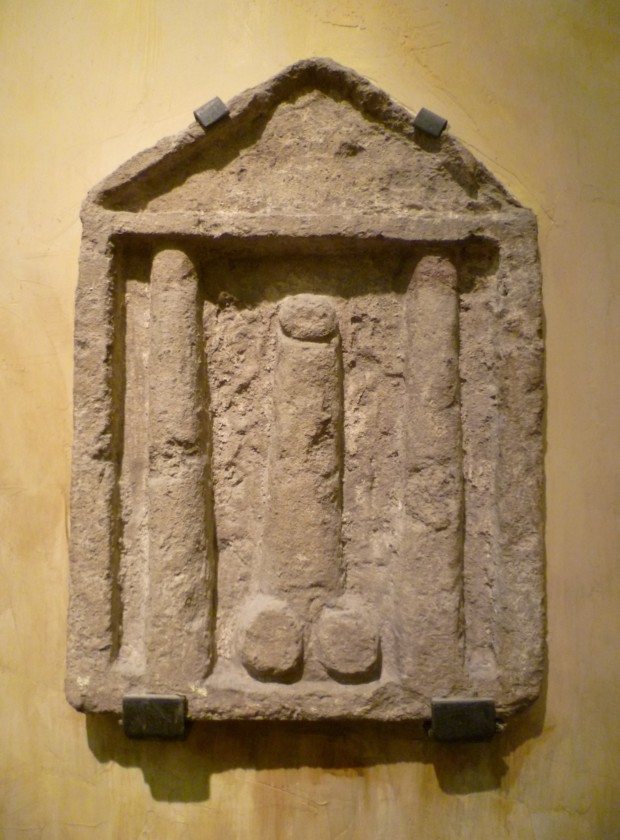
The phalluses, as an independent phenomenon or as a body part of Pan, Priapus, or a similar deity were a common image. Priapus was a god of sex and fertility and was often shown with an oversized erection.
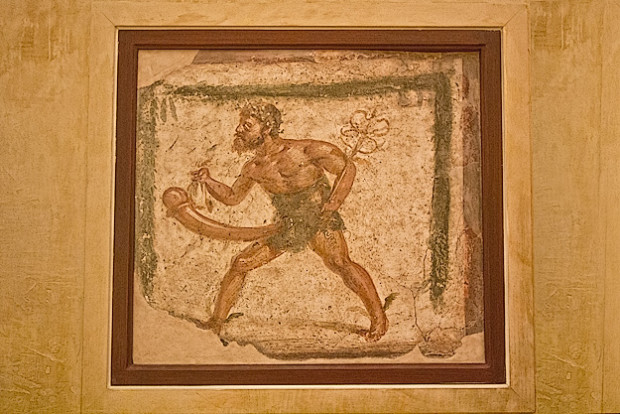
The phalluses might have also been treated as a ward against the evil eye, which sounds like quite an interesting concept nowadays.
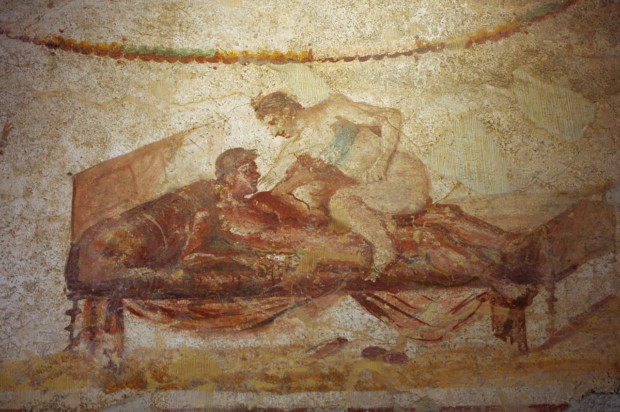
In Pompei and Herculaneum you can find a lot of big erotic frescoes on walls. They might have been advertisements for brothels. Brothels also had many erotic paintings and graffiti inside. The most interesting of which was called The Lupanar and had 10 rooms (cubicula, 5 per floor), a balcony, and a latrine.
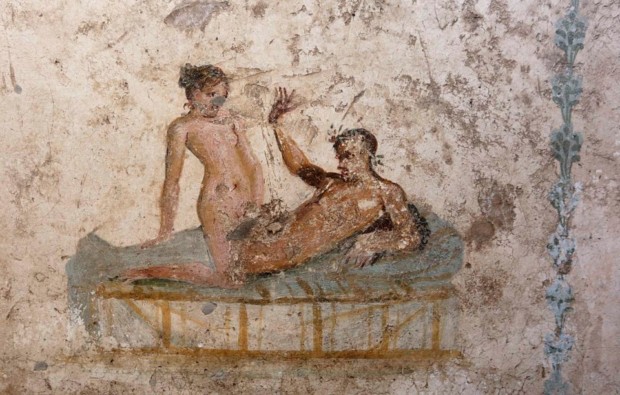
Prostitution was relatively inexpensive for the Roman male, but it is important to note that even a low-priced sex worker earned more than three times the wages of an unskilled urban laborer. However, it was unlikely a freedwoman would enter the profession.
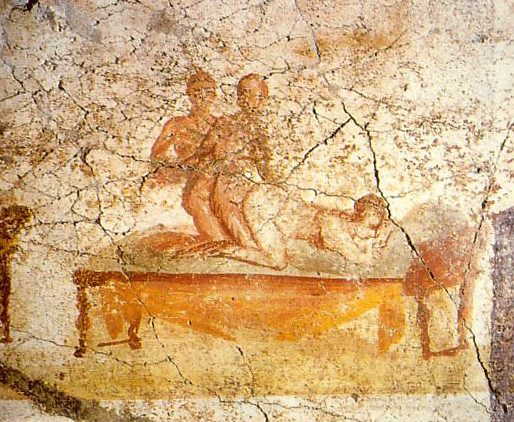
These pictures were found in a changing room on one side of the newly excavated Suburban Baths in the early 1990s. The function of the pictures is not yet clear: some authors say that they indicate that the services of prostitutes were available on the upper floor of the bathhouse and could perhaps be a sort of advertisement, while others prefer the hypothesis that their only purpose was to decorate the walls with joyful scenes, which was a popular thing in Roman culture.
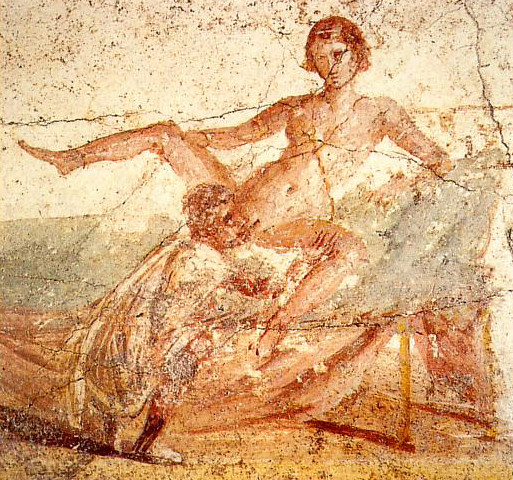
There is also one more interesting explanation; that they might have served as reminders of where one had left one’s clothes. Well, whatever works!
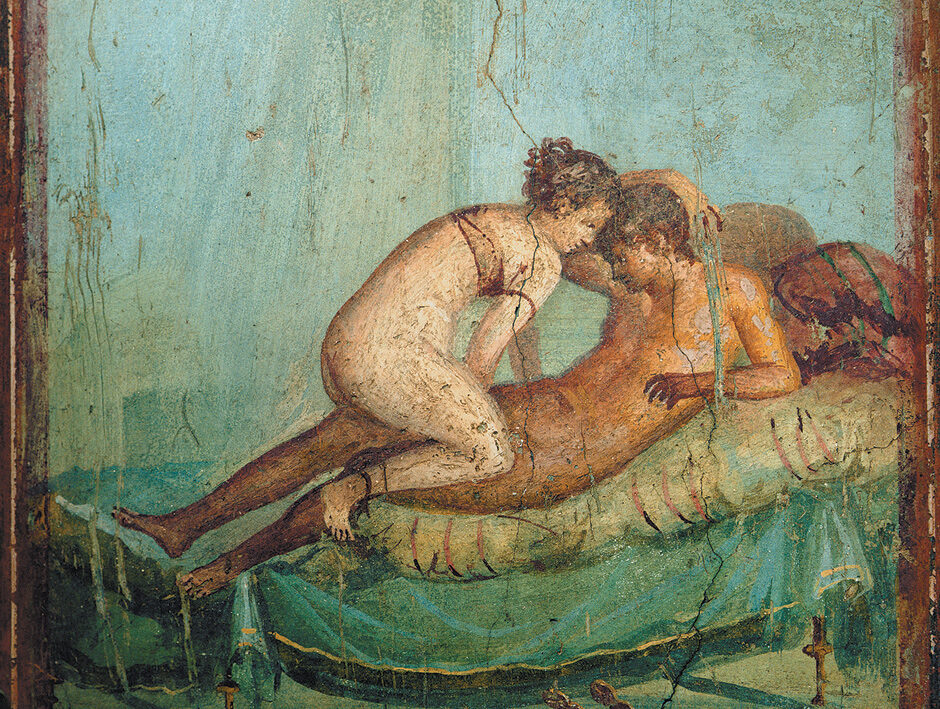
DailyArt Magazine needs your support. Every contribution, however big or small, is very valuable for our future. Thanks to it, we will be able to sustain and grow the Magazine. Thank you for your help!